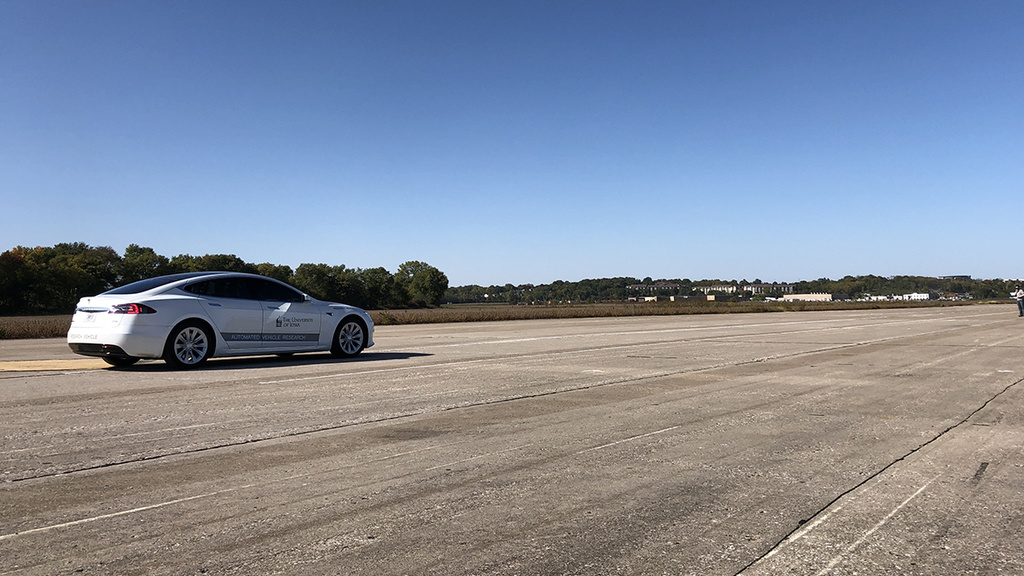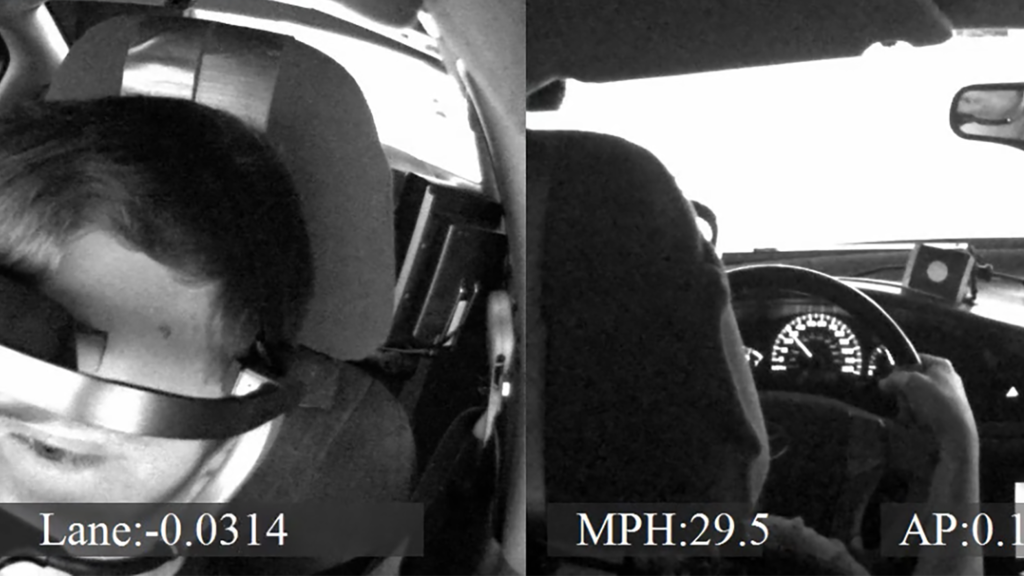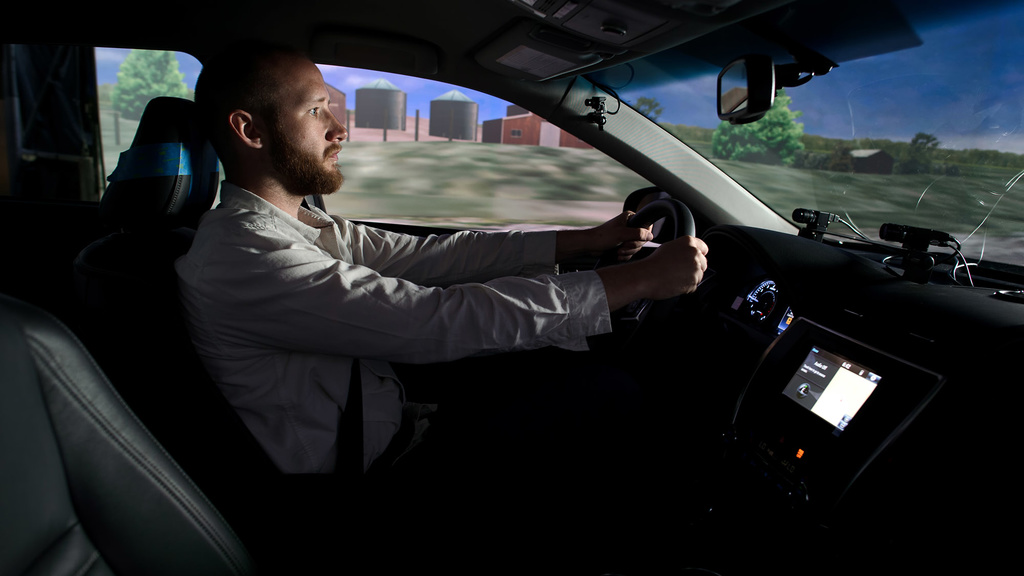Human Factors Research
Our work enhances safety through understanding the human-vehicle relationship.
Technology: We work to understand and advance vehicle technology and simulation science.
Understanding: We explore methods for improving driver performance and understanding of technology, such as driver training and studying mental models.
Performance: We aim to identify and shift the limits of the human-machine relationship by studying
- Drowsy and distracted driving
- Novice or young drivers
- Older drivers
- User interfaces
Mobility: We work to enhance mobility with the use of connected and automated vehicles through research and outreach.
Contact

John Gaspar
Title/Position
Director of Human Factors Research
News: Human Factors

Medical research meets driving research
Tuesday, February 2, 2021
Does exercise change driving performance in patients with Parkinson’s disease?
Countermeasures to reduce drowsy driving
Monday, January 25, 2021


Teens at the wheel
Wednesday, January 20, 2021
When parents are in the vehicle with their teenage driver, crash rates are low. However, as soon as teens are by themselves, the crash rates skyrocket. Can new-driver training programs be used to effectively lower those rates?
KGAN: New driving behavior a concern heading into winter
Friday, November 20, 2020
Changing driver behavior due to the COVID-19 pandemic in combination with dangerous winter conditions raises concern for many driving safety officials in the state of Iowa. Driving Safety Research Institute director, Daniel McGehee discusses the dangers of speed and the changes in driver behavior due to the pandemic.
University of Iowa researchers focus on the transition from self-driving to manual modes in vehicles
Monday, October 26, 2020

NADS pulls in nearly $1.5M to further study transition of control in automated vehicles
Thursday, October 15, 2020
The National Highway Traffic Safety Administration (NHSTA) recently granted the University of Iowa National Advanced Driving Simulator (NADS) a $1.45 million award to further study transition of control in automated vehicles in a simulation environment.
Car and Driver Magazine: We Take an $80 Million Driving Simulator for a Spin
Saturday, July 11, 2020
The University of Iowa uses a Toyota Camry and a lot of tech to study how humans interact with the future. We went for a drive.
Touch screens in cars are distracting, so why do we keep putting them there?
Saturday, October 19, 2019
Daniel McGehee is a human factors engineer and director of the National Advanced Driving Simulator at the University of Iowa, where he studies distracted driving and specializes in figuring out how to design vehicle interfaces around human limitations, such as memory and vision.
9 signs you could be a distracted driver
Wednesday, April 24, 2019
This Gazette article asks a big question "Are you a distracted driver?" Learn what distracted driving really means and how you can take the steps to be a more aware and less distracted driver.
Pagination